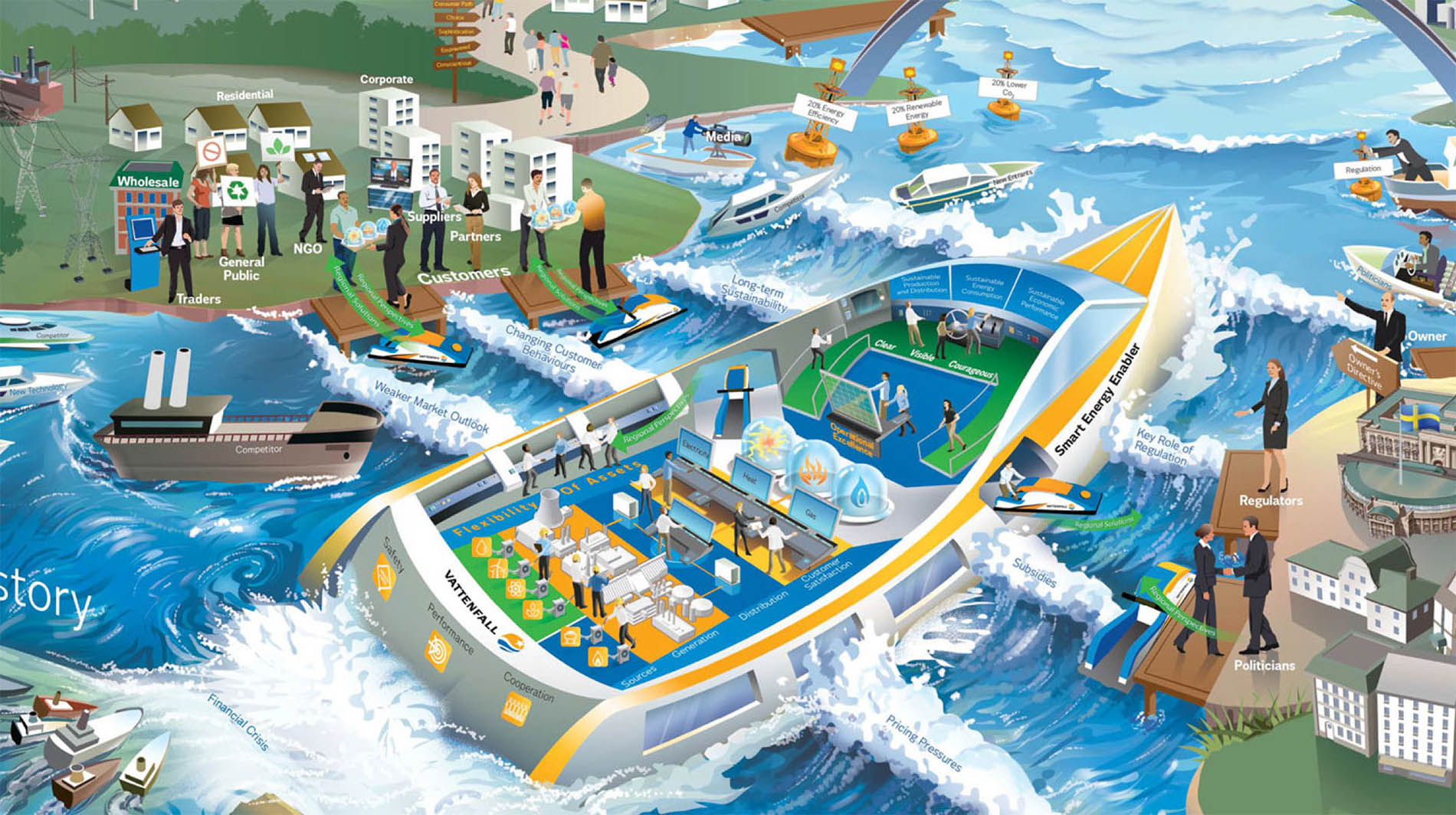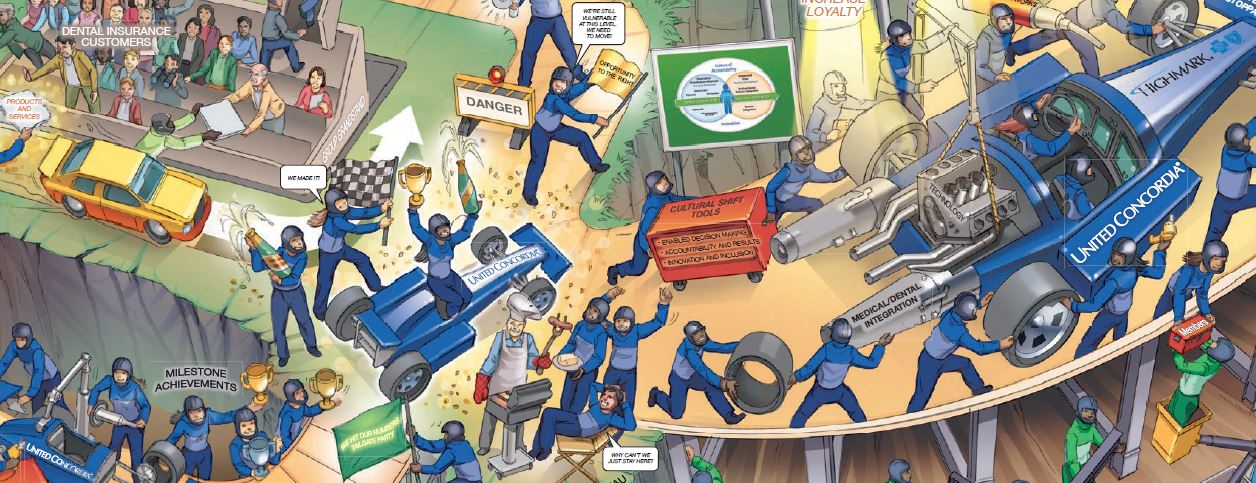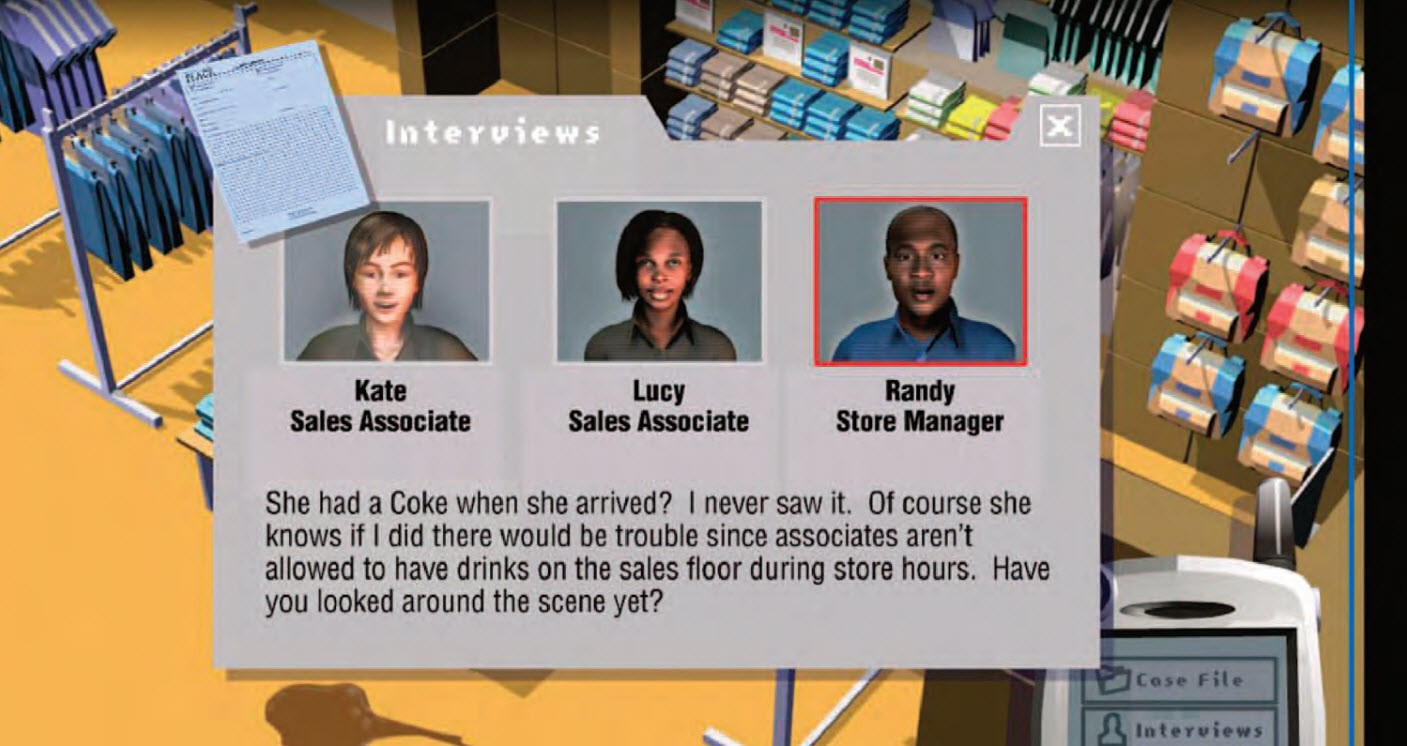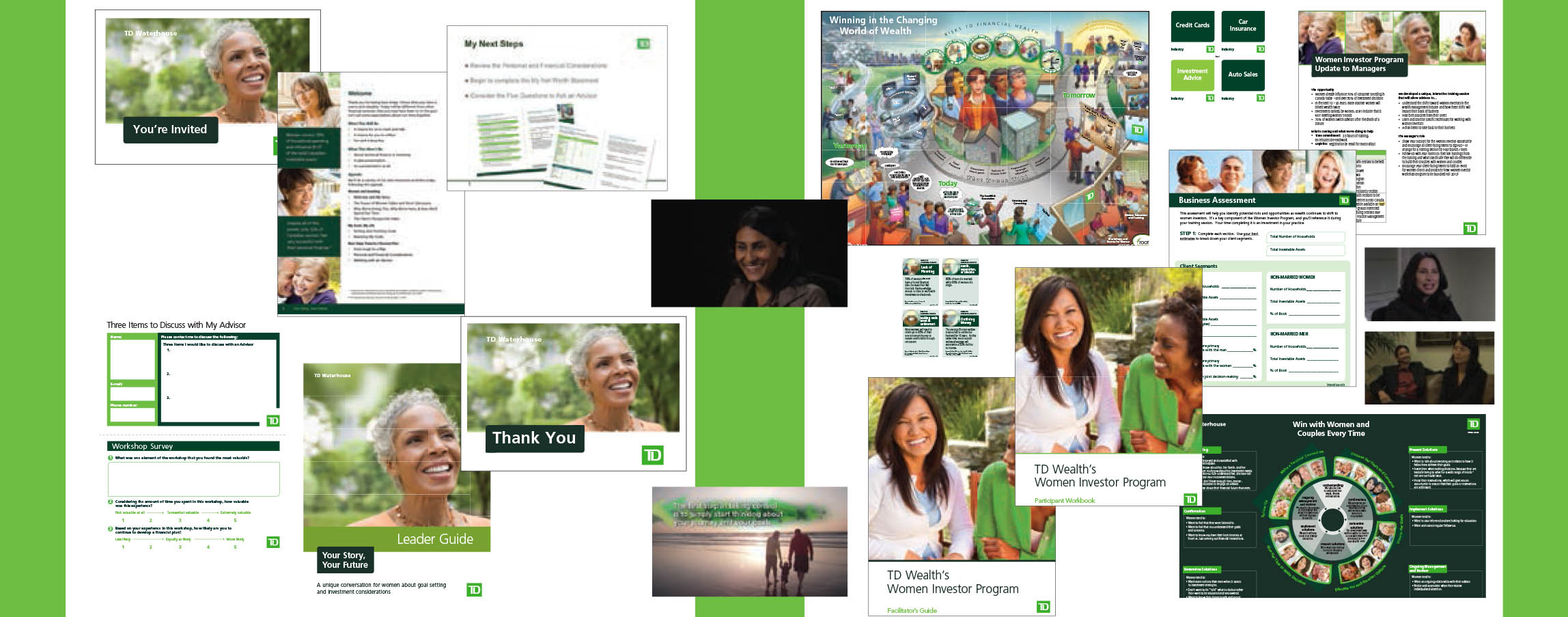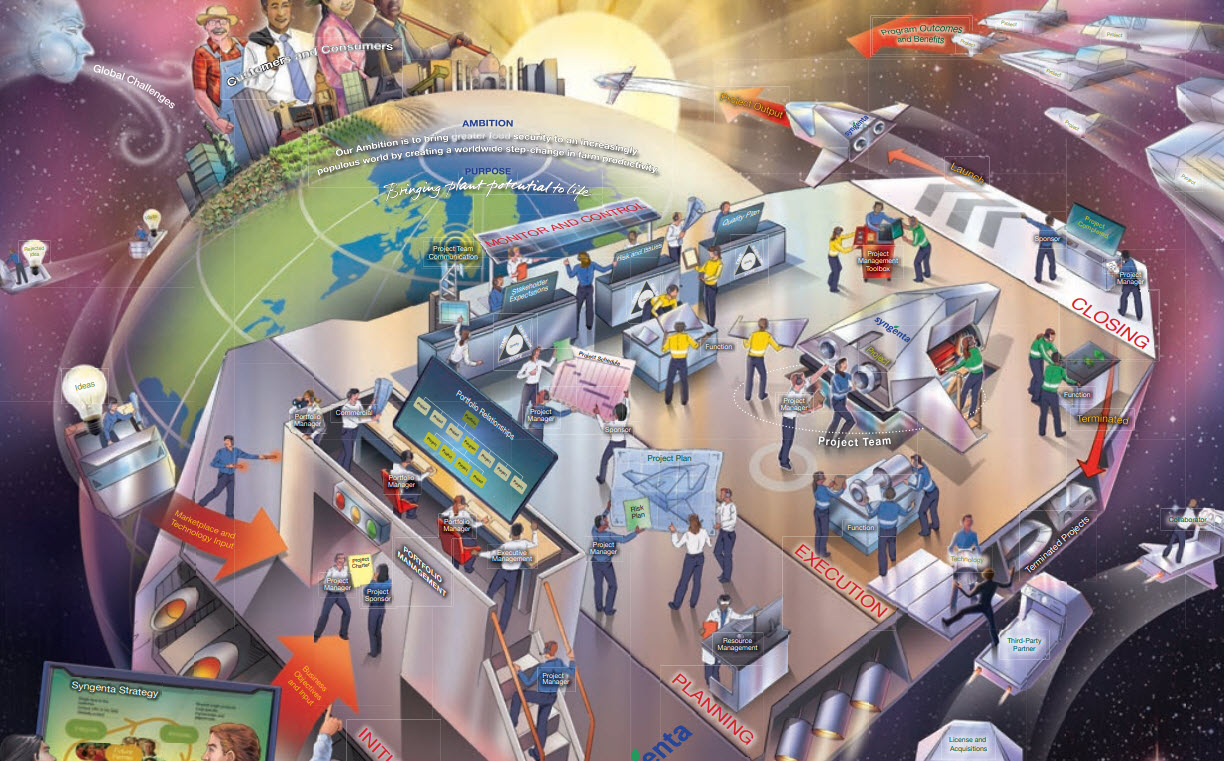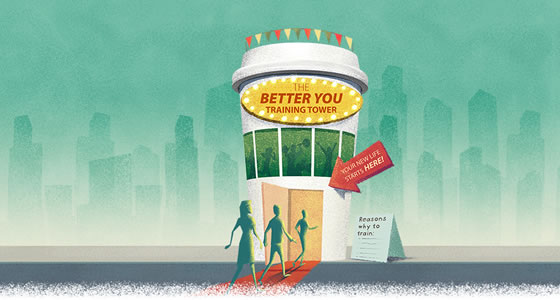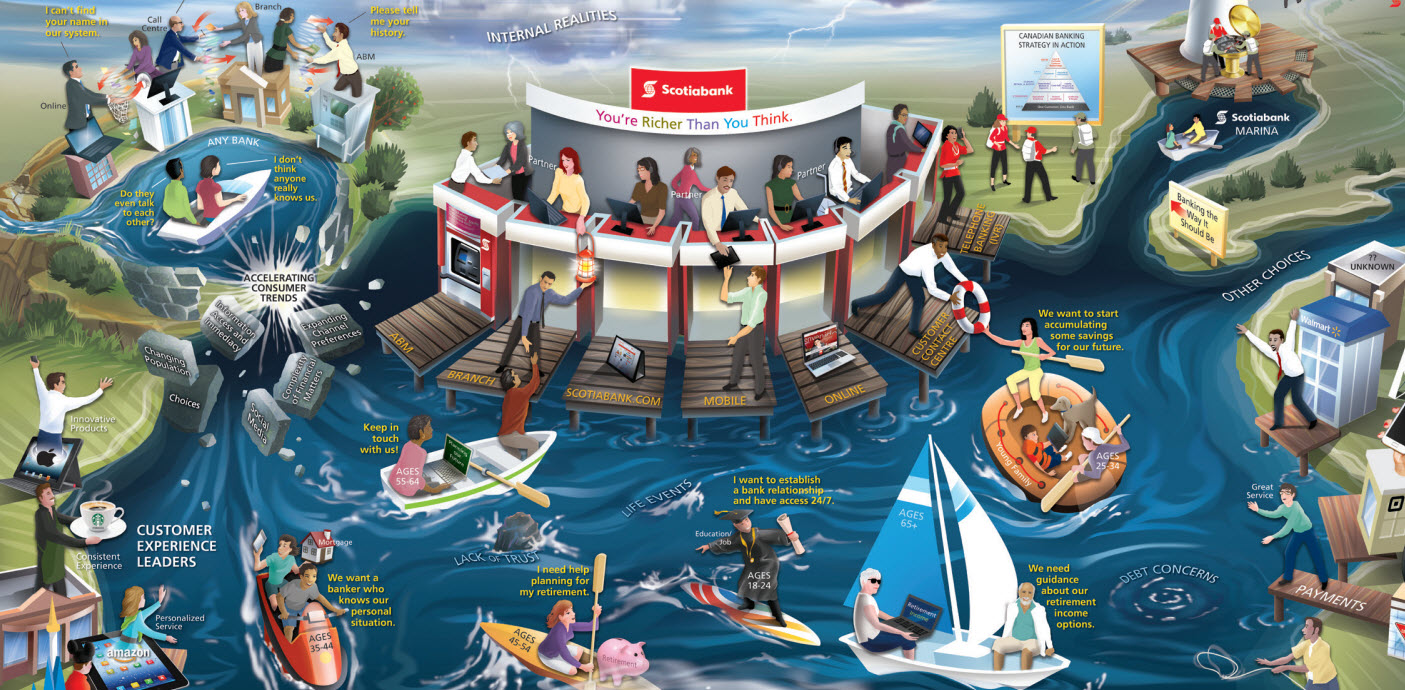
The Company
A global biopharmaceutical company whose mission is to discover, develop, and deliver innovative medicines that help patients prevail over serious diseases. This particular plant is responsible for tech transfer, product launching, and excellence in bottled packaging.
The Business Challenge
The company had made an enormous investment in one of its plants and was in a time of unprecedented growth and change. The workforce had doubled from 250 employees
to more than 500. It had a new general manager coming on board, and it had separated from a sister plant the year before. The company’s mission had always been capital-focused with an emphasis on expansion. Once it had accomplished that, however, the company was trying to discern who it was and who it wanted to be moving forward.
The new division leaders had done a good job articulating the company’s new strategy. Corporate leadership defined eight goals, centered around quality, innovation, safety, customer service, cost, cash flow, employee engagement, and launch reliability. Leadership also sought to explain the role of this specific site in the big picture of the network. It was to be a tech transfer and product launch site as well as a center of excellence for bottled packaging. The good (and challenging) news was that corporate was issuing a lot of freedom as to how exactly it would achieve the new goals.
- They began to ask themselves many critical questions, like:
- What do we want the culture to be?
- How do we want to engage employees?
- How will we know if they are, indeed, engaged?
- How will we recreate what we have established with our long-term employees with all of our new staff – about half the plant?

The Solution
The site knew it needed the right partner to help with this journey and to ensure all employees got the same message. They were on an aggressive timeline to achieve their goals by 2015, and it was urgent that they defined and explained what that meant to their people in a motivating and engaging way. The key was conveying that the same things they had always done would not work to get them there. They selected Root Inc. for its experience, vision, and creative methodologies.
The process began with Root conducting in-depth employee interviews to assess the different perspectives and gain alignment. This work uncovered challenges, including that the strategy itself was not well understood and many members of the team felt they were not operating in a united manner. As in many organizations, the company also had too many priorities, and too little visibility into what was happening cross-departmentally. The incoming leadership and new employees added to the site had caused somewhat of an identity crisis. They needed some clear-cut ways to prioritize initiatives and to overcome the skepticism around the direction they were heading.
The company worked with Root to create two Strategic Learning Map® modules to help people visually connect their roles to the overall strategy:
Map 1
The first Strategic Learning Map® module was all about the industry and was designed to help people understand pharmaceuticals and how the industry had evolved. Its goal was also to educate the new team members quickly. It explored yesterday’s world, forces of change, alliances with competition, blockbuster drugs, and the global marketplace. This first Learning Map® module also revealed how the organization had consolidated 40 plants down to 12, each with a very specific role in the network, and how production had gone from being very U.S.-centric to being dispersed internationally.
Map 2
This Strategic Learning Map® visual was specific to the site location and took a look inside operations to see what happens in the plant. Using the visual, employees learned about the plant’s processes and goals. The Learning Map® module was designed so that employees saw themselves somewhere in the visual. Employees needed to understand a two-pronged concept: running the business and changing the business in the context of its ideal future state.

Implementation
Both Strategic Learning Map® modules were delivered in cross-functional offsite meetings where teams of eight to 12 people were grouped together. The company’s leaders were trained to facilitate the rollout and the energy was high. There was music, branded cookies and gear, product show-and-tells, and a review of the corporate strategy.
The goal was to help people understand what they needed to do to get from point A (the current state) to point B (achieving the new set of goals). The leadership team went to great lengths to ensure the language was understandable and results-driven. At first, there were 60 priority items on the list. Together, they narrowed it down by half – putting forth 30 projects across the site that needed to be staffed, funded, and measured in order to achieve their goals. Each one was color-coded and tied to a specific goal for employees to see, at a glance, what projects lie in each area, and so they could continually refine, reprioritize, and fill gaps.
Root introduced techniques and a standardized approach to vet each department’s strategy and initiatives, and to determine how they connect to the overall picture. Using PDF templates provided by Root, department heads created their strategies. This led to a new level of consistency and a way to compare and contrast departmental priorities in an apples-to-apples fashion. Ultimately, this made it much simpler to shift focus away from any initiatives that seemed like wasted effort or that would not contribute to the overall forward motion of the site.
Then they worked with Root to connect each individual employee’s performance needs and priorities to department plans and subsequently to the overall strategy in a clear, uniform way. Everything was designed to be transparent so everyone could see one another’s objectives and where people were in the process of achieving goals. Root was instrumental in helping the company take its enormous strategy and boil it down to the level of individual objectives that everyone could embrace.
Results
The process of developing the Strategic Learning Map® modules forced the team to come to agreement and signoff together at every stage. This brought open dialogue and debate, created comfort around challenging one another in constructive ways, and brought the team closer together. Ultimately, every team member felt they owned the project and that they gelled with one another during the process, which set them up for long-term success as a group. They received the tools and the mindset shift to make decisions focused on the big picture, instead of through the lens of the individual department’s own priorities or agenda.
Today, the company’s journey through its Learning Map® experiences lives on the wall at the plant site, along with a dashboard that explains where they are and what they aspire to achieve. The team has developed a series of planned and carefully orchestrated supporting events featuring games, puzzles, and links to individual objectives and has been recognized internally with a corporate achievement award for this initiative.
Disruptive Methods Applied








